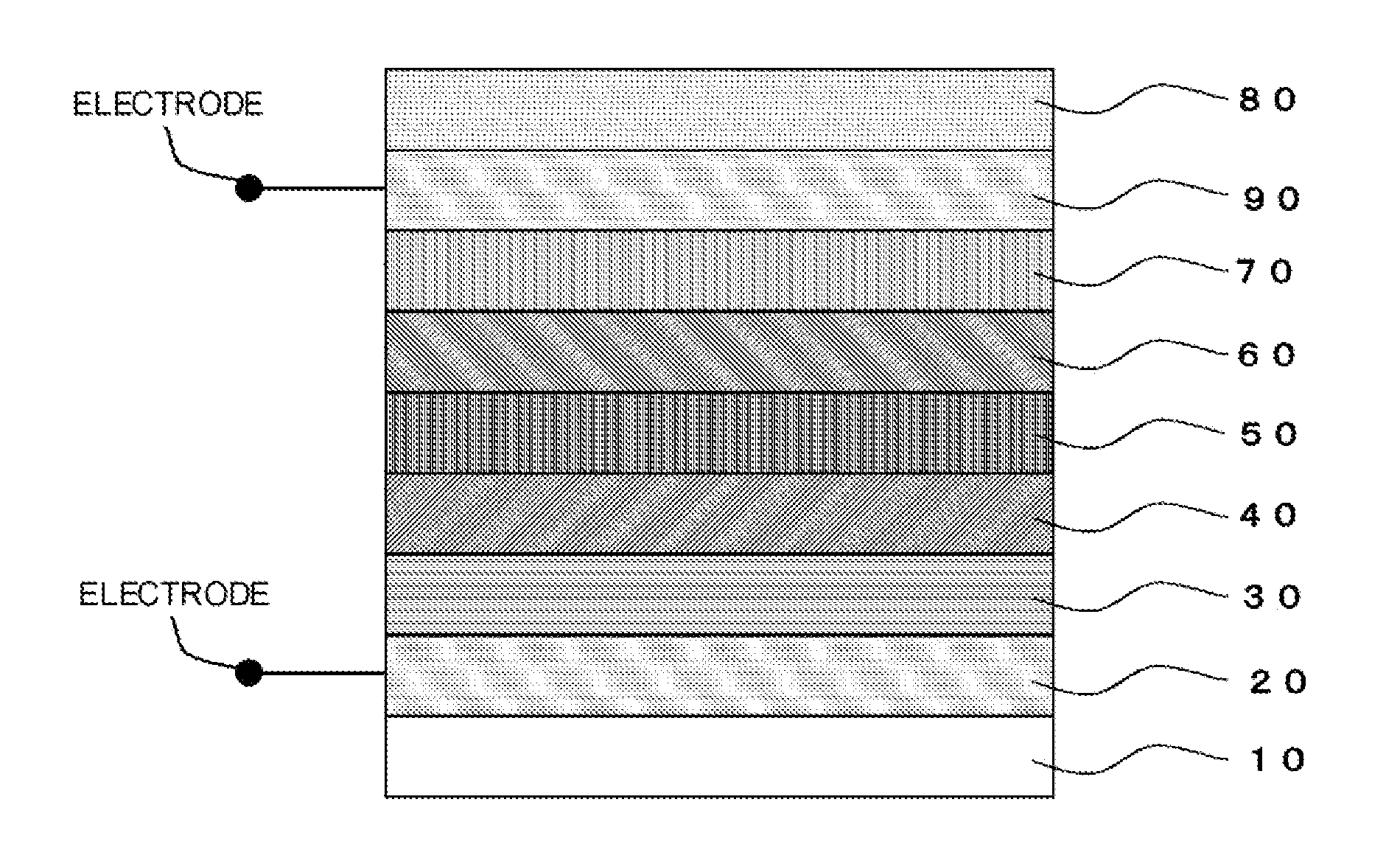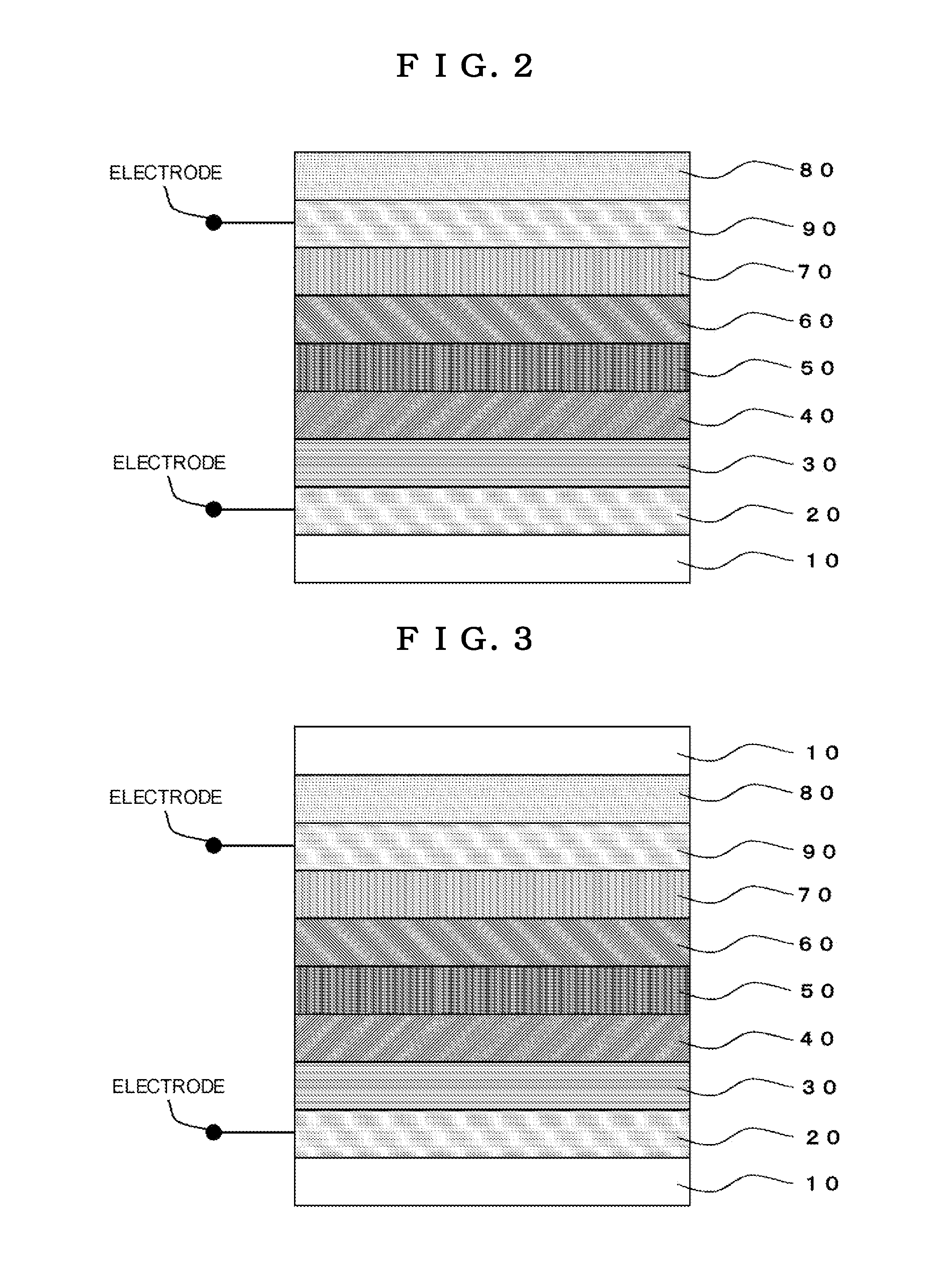All-solid-state reflective dimming electrochromic element sealed with protective layer, and dimming member comprising the same
a technology of electrochromic elements and dimming elements, which is applied in the direction of door/window protective devices, coatings, instruments, etc., can solve the problems of difficult application of this element to an increased area, difficult to reduce trim temperature, and high interior temperature of automobiles in a certain environment, etc., to achieve excellent reflective dimming properties, easy to use, and easy to use
- Summary
- Abstract
- Description
- Claims
- Application Information
AI Technical Summary
Benefits of technology
Problems solved by technology
Method used
Image
Examples
example 1
[0129]Example 1 of the invention is described below. In Example 1, an electrochromic element having the construction shown in FIG. 1 was prepared.
Preparation of an Electrochromic Element
[0130]A transparent substrate of a glass sheet having a thickness of 1.1 mm was coated with a tin-doped indium oxide having a surface resistance of 10Ω / □ as a transparent conductive film layer. The resultant substrate was set in a vacuum apparatus, and the apparatus was evaluated to create a vacuum.
[0131]Then, on the transparent conductive film layer, a tungsten oxide thin film was deposited as an ion storage layer by a reactive direct current (DC) magnetron sputtering method using a magnetron sputtering machine. In the deposition of film, sputtering was performed by applying a power of 80 W to a metallic tungsten target in a mixed gas atmosphere having an argon gas to oxygen gas flow rate ratio controlled to 7:1.5 at a pressure of 1.0 Pa in the vacuum chamber. The deposited tungsten oxide thin film ...
example 2
Preparation of an Electrochromic Element
[0149]Tungsten oxide, tantalum oxide, aluminum, palladium, and magnesium-nickel alloy thin films were deposited on a glass substrate having a transparent conductive film using a magnetron sputtering method in accordance with the same procedure as in Example 1. The conditions for the depositions of respective films are the same as those in Example 1.
[0150]A solution of a mixture of a polyvinyl chloride and tetrahydrofuran was applied as a protective layer by a spin coating method so that the resultant protective layer sealed the multilayer film including the magnesium-nickel alloy thin film as a reflective dimming layer. As the coating solution, a solution obtained by dissolving 1 g of a polyvinyl chloride in 50 ml of tetrahydrofuran was used. After the application, the resultant element was kept in a thermostat at 50° C. so that the solvent was allowed to volatilize to form a protective layer of the polyvinyl chloride, preparing an electrochro...
example 3
Preparation of an Electrochromic Element
[0159]Tungsten oxide, tantalum oxide, aluminum, palladium, and magnesium-nickel alloy thin films were deposited on a glass substrate having a transparent conductive film using a magnetron sputtering method in accordance with the same procedure as in Example 1. The conditions for the depositions of respective films are the same as those in Example 1.
[0160]A fluororesin (DURASURF DS-5400, manufactured by Harves Co., Ltd.) was applied as a protective layer by a spin coating method so that the resultant protective layer sealed the multilayer film including the magnesium-nickel alloy thin film as a reflective dimming layer. After the application, the solvent component was allowed to spontaneously volatilize to form a protective layer of the fluororesin on the surface of element, preparing an electrochromic element.
Change with Time of the Optical Transmittance and Optical Reflectance
[0161]The obtained element was set in the evaluation apparatus show...
PUM
| Property | Measurement | Unit |
|---|---|---|
| density | aaaaa | aaaaa |
| total transmittance | aaaaa | aaaaa |
| water absorption | aaaaa | aaaaa |
Abstract
Description
Claims
Application Information
 Login to View More
Login to View More - R&D
- Intellectual Property
- Life Sciences
- Materials
- Tech Scout
- Unparalleled Data Quality
- Higher Quality Content
- 60% Fewer Hallucinations
Browse by: Latest US Patents, China's latest patents, Technical Efficacy Thesaurus, Application Domain, Technology Topic, Popular Technical Reports.
© 2025 PatSnap. All rights reserved.Legal|Privacy policy|Modern Slavery Act Transparency Statement|Sitemap|About US| Contact US: help@patsnap.com



